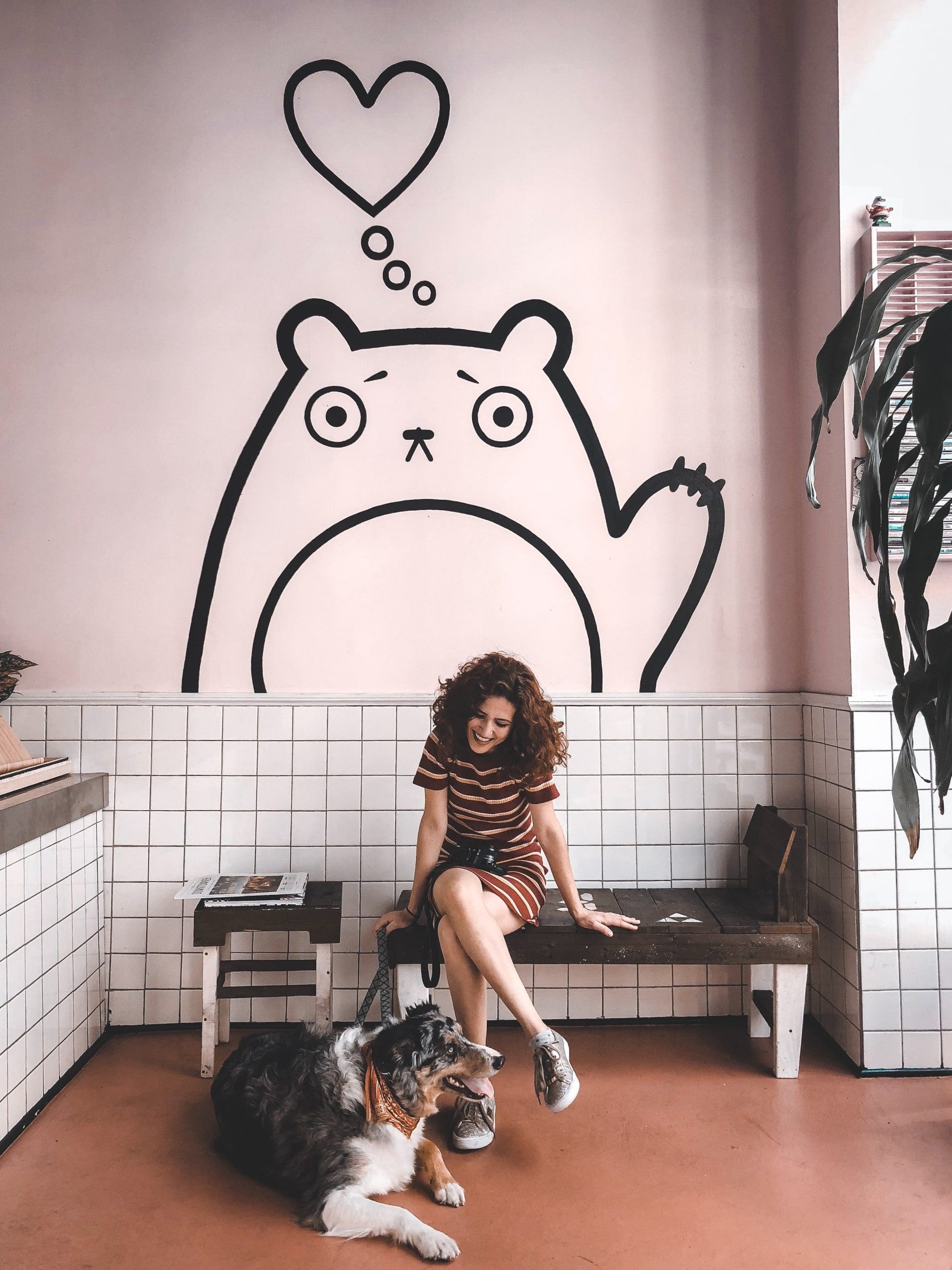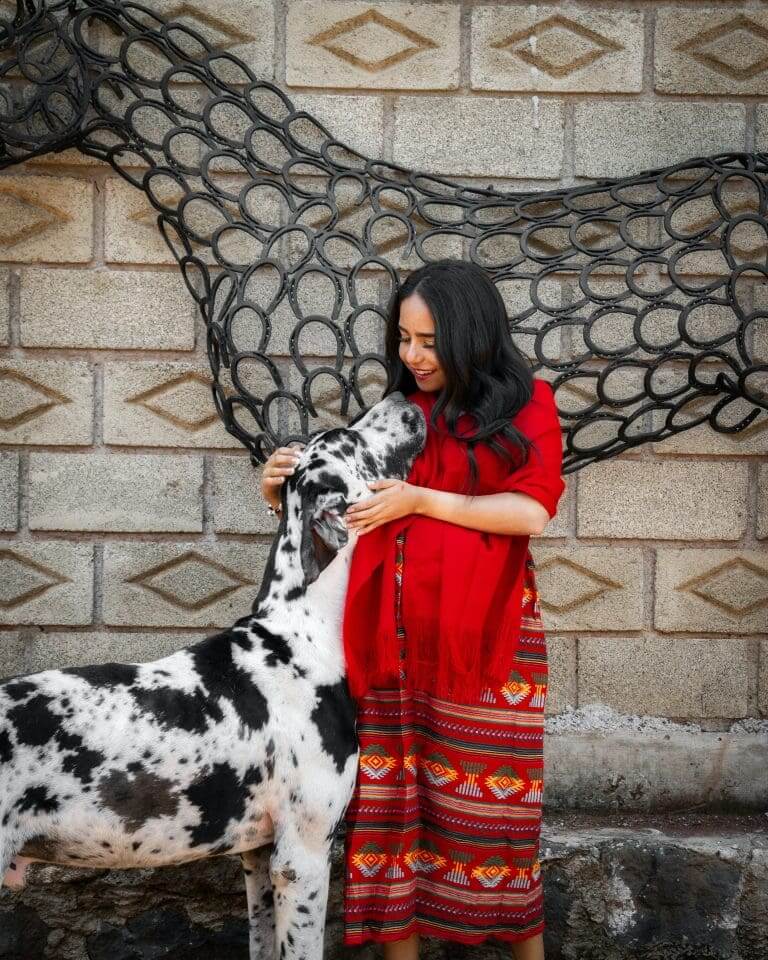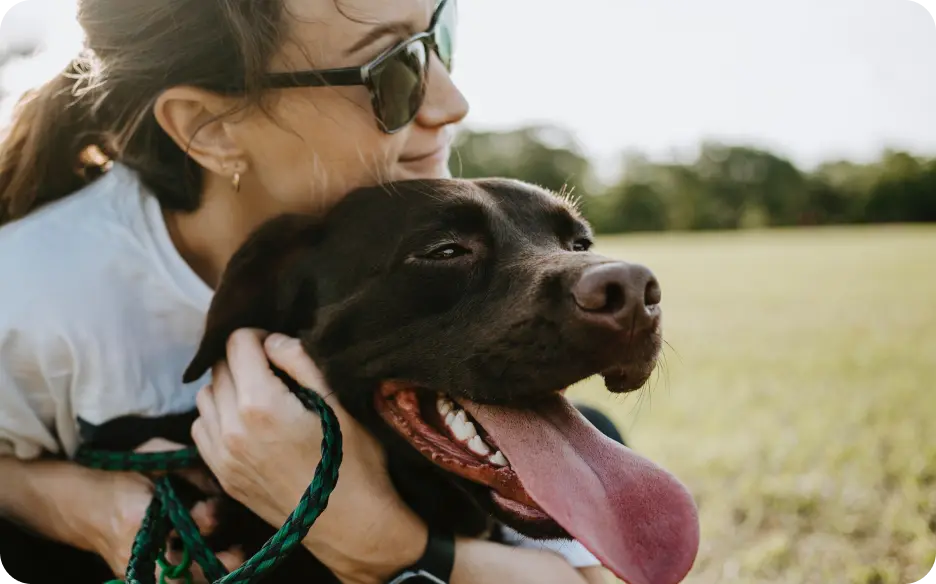Why Does My Dog Lick Me When I Pet Her?
Post Date:
December 10, 2024
(Date Last Modified: December 10, 2024)
If your dog showers you with licks while you’re giving her the occasional scratch behind the ears, it’s natural to wonder about this behavior. While it can be endearing, it may also leave you puzzled. Understanding the motivations behind your dog’s licking can strengthen your bond and enhance your relationship.
Affection and Bonding
Dogs are inherently social creatures with their own unique ways of expressing emotions. Licking is one of those methods. When your dog licks you during petting, it’s often a sign of affection. This behavior mirrors how dogs interact with each other in the wild, serving as a gesture of closeness that reinforces the bond between you. Your dog perceives you as part of her pack, and licking is her way of saying, “I love you.”
Sign of Submission
Licking can also indicate submission. In canine social structures, licking is a way to show respect or appease a more dominant member. When your dog licks you, it may signify her comfort and acknowledgment of your role as her caregiver. This mutual behavior fosters trust and creates a sense of safety for both of you.
Instinctual Comfort
The instinct to lick often stems from puppyhood, where licking the mother provides comfort and nourishment. Even as adults, dogs may lick to self-soothe, especially when feeling anxious. If your dog licks you while being petted, she might be recalling that nurturing bond and looking for reassurance in your presence.
Exploration and Curiosity
Dogs use their mouths to explore their surroundings. When your dog licks you, she could be gathering information about you. This behavior is particularly pronounced if you’ve been cooking or handling something with an interesting scent. With an extraordinary sense of smell, your dog uses licking as a means to better understand her environment.
Seeking Attention
Sometimes, licking is a plea for attention. If you’re preoccupied while petting her, she might lick you to regain your focus. Dogs are extremely perceptive and can easily sense when your attention is elsewhere. In these moments, the licking serves as a reminder that she’s present and deserving of your affection.
Context Matters
The context surrounding your dog’s licking is essential. If it happens during play or when she’s excited, it’s likely a playful gesture. Many dogs lick when they’re happy, using this behavior as a way to invite more interaction.
Monitoring Changes in Behavior
While licking is typically normal, be mindful of any changes in its frequency or intensity. Excessive licking can indicate anxiety or stress. If you notice this shift, it may be wise to evaluate her environment and daily routines for potential triggers. Ensuring she has a consistent structure, enough exercise, and mental stimulation can help reduce anxiety-driven licking.
If your dog excessively licks specific areas of her body, it could signal an underlying health issue, such as allergies or skin infections. Persistent licking in particular spots warrants a consultation with your veterinarian to rule out medical concerns.
Engaging with Your Dog
Understanding your dog’s licking behavior can enhance your relationship. Rather than pulling away during these moments, consider responding with gentle petting, calming words, or a treat to reinforce positive interactions. This engagement can help your dog feel valued and understood.
Observing your dog’s body language alongside her licking can provide additional insight. A wagging tail and relaxed ears typically indicate happiness, suggesting her licking is rooted in affection. Conversely, tense body language may signal discomfort, prompting you to explore ways to provide her with greater comfort.
Creating a Comfortable Environment
A conducive environment can significantly reduce anxiety that leads to excessive licking. Designate a safe space for your dog to retreat to when feeling overwhelmed, and ensure she has plenty of toys and activities for mental stimulation. Regular physical exercise is equally vital, helping to alleviate stress and expend excess energy.
Establishing a consistent daily routine for feeding, walks, and playtime brings stability to your dog’s life. This predictability can help reduce anxiety, which may ultimately lessen licking behavior. Incorporating positive reinforcement training sessions not only fosters obedience but also strengthens your bond.
Seeking Professional Help
If licking becomes a concern, consulting a professional dog trainer or behaviorist may prove beneficial. They can offer tailored strategies to address the behavior while ensuring your dog feels secure and loved.
Educating Yourself
Knowledge about dog behavior and communication enhances your ability to respond effectively to your dog’s actions. Numerous resources, from books to online courses, can expand your understanding and skills as a dog owner.
Building a Strong Relationship
Recognizing the reasons behind your dog’s licking behavior contributes to a more fulfilling partnership. By fostering an environment of trust, you can cultivate a lasting bond. Each lick serves as a form of communication, inviting you to connect on a deeper level. Embrace these moments as opportunities to strengthen your relationship.
When the licking feels overwhelming, take a moment to appreciate the affection behind it. Each lick is a reminder of your unique bond and the joy your dog finds in your presence. Understanding and responding to these behaviors can lead to a harmonious, fulfilling relationship for both of you.






